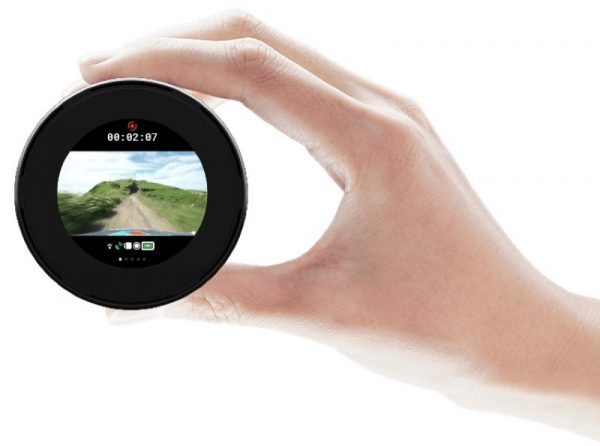
The dash cam market is a crowded place. It’s so crowded, I’ve kind of given up on searching for “the best”. Recently, Waylens released a dash cam called the Horizon that not only boasts excellent image quality but gives the driver the option to overlay vehicle information such as speed, RPM, GPS and more, all in an oddball cone-shaped body unlike nothing else.
In the age of generic dime-a-dozen dash cams, why on earth would anyone want something more expensive? If you’re picky about video quality like I am, the Waylens Horizon promises quite a bit.
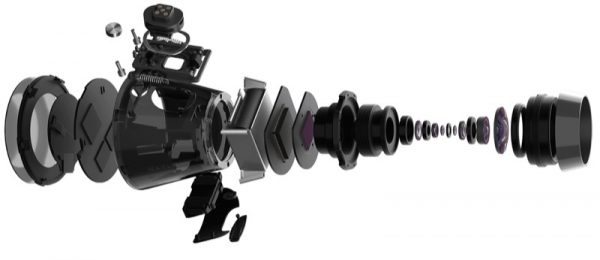
LENS
- 157 degree wide angle
- f/2.4 aperture
- 7 elements aspherical lens of high quality glass
- Metal Barrel
- Fixed focus
SENSOR
- Optical size 1/1.8”
- Pixel 2.4 um x 2.4 um
- Back-illuminated structure
- High sensitivity
- High dynamic range
- HLP (high light performance) mode
- LLP (low light performance) mode
DISPLAY
- display – 286ppi
- Display resolution 400×400
- Perfect circular display
- Screen size 1.39”
- Display mode – AMOLED
- Display Color 16.7Million
- Brightness (nits) 300
- Contrast Ratio: 2,000,000:1 (Theoretical), 10000:1 (Conservative)
IMAGE SIGNAL PROCESSOR
- Processing speed: 318M Pixels/second
- Scenic mode (day time)
- Night recording mode
OTHER SENSORS
- Barometer
- Three-axis accelerometer
- Three-axis gyro
- Three-axis Magnetometer
MEMORY
- Micro SD Card Up to 128GB (not included)
- Memory card slot
CONNECTIVITY
- Wifi 802.11 b/g/n
- Bluetooth 2.1 + EDR
- Bluetooth 4.0 Low Energy (BLE)
POWER AND BATTERY
- Removable rechargeable lithium-ion battery
- External power cable and cigarette charger
AUDIO
- Stereo Internal Microphone
- Noise reduction
- Speaker
GPS
- 10 Hz GPS module
The package feels a lot like a travel mug. The camera itself sits atop the cylinder like the command module of a rocket ship.
Open the cylinder and you’ll find the payload of dash cam mounts, cables and accessories all neatly stowed away.
IN THE BOX
- Waylens camera
- Car mount
- Remote control
- USB adapter
- OBD transmitter
- Car charger
- Car mount cable (13ft 4m)
- USB cable (4ft 1.2m)
- Cable holder x 12
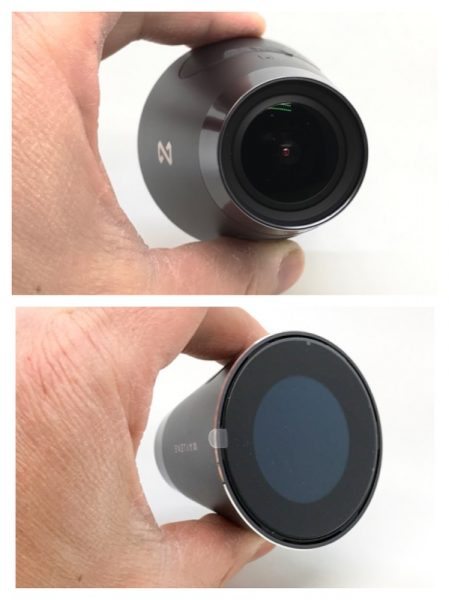 The camera itself is a metallic cone with a huge lens up front. On the back is a perfectly circular OLED touch screen.
The camera itself is a metallic cone with a huge lens up front. On the back is a perfectly circular OLED touch screen.
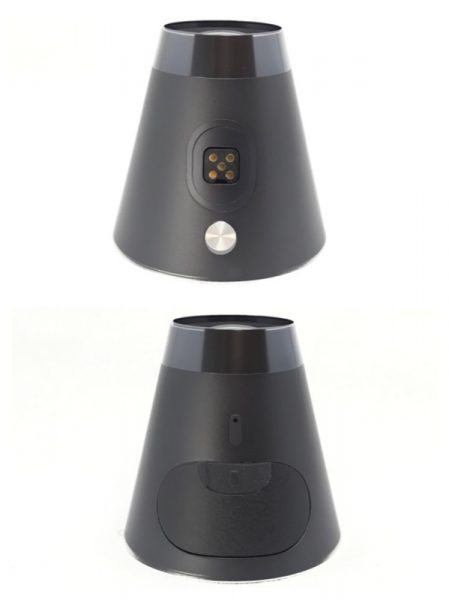 On one side is the 5-pin quick-release mount. On the bottom is a flush manual power button and a flap for the microSD card (not included).
On one side is the 5-pin quick-release mount. On the bottom is a flush manual power button and a flap for the microSD card (not included).
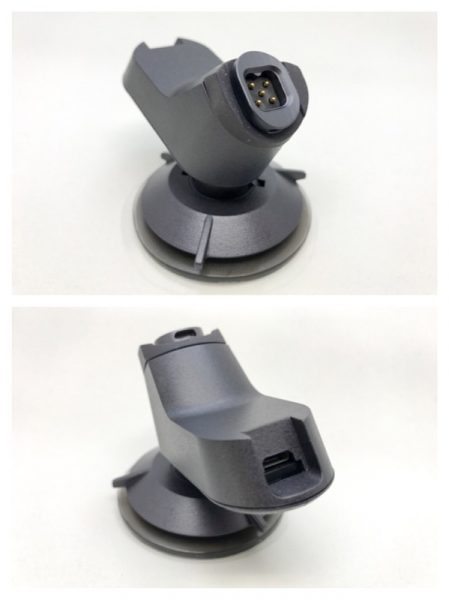 The mount is an odd-looking L-shaped bit attached to a suction cup on a swivel. The suction cup is one of those sticky-gummy types. A locking ring secures the suction and adds more resistance to the swivel, locking it in place. I should note that the mount is pretty much all plastic except the quick-release portion, which is metal.
The mount is an odd-looking L-shaped bit attached to a suction cup on a swivel. The suction cup is one of those sticky-gummy types. A locking ring secures the suction and adds more resistance to the swivel, locking it in place. I should note that the mount is pretty much all plastic except the quick-release portion, which is metal.
Here are the quick release halves, close up. Note the five contact points and the keyed tab. This only fits in one way.
This little mount confused me. There’s no adhesive or suction cup. It’s not magnetic. The microUSB connector faces the opposite direction vs. the other mount. It’s designed for use as a dock when you’re at home. The camera balances nicely on it.
Here’s the camera mounted to both the suction cup mount (top) and the short “home” mount. Notice the direction of the USB port.
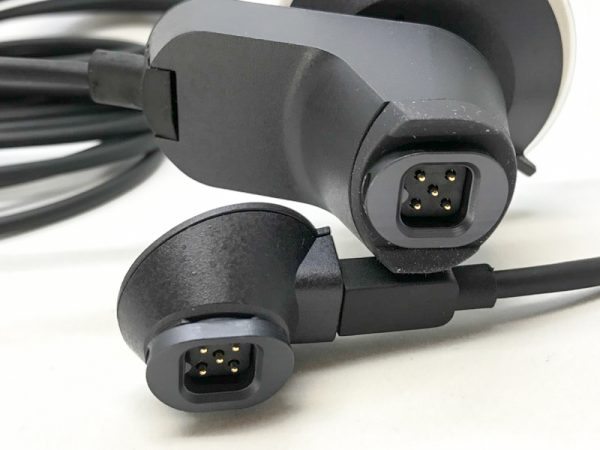 Another closeup of both mounts with USB cables attached.
Another closeup of both mounts with USB cables attached.
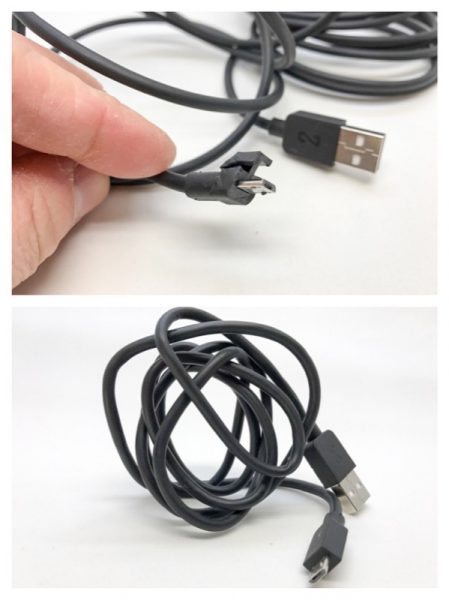 Speaking of USB cables, the kit comes with two. One is very, very long and is designed to be installed in the car. It has a fancy rubbery cover on the microUSB end to give a more finished look when installed. The other is a shorter, regular microUSB cable.
Speaking of USB cables, the kit comes with two. One is very, very long and is designed to be installed in the car. It has a fancy rubbery cover on the microUSB end to give a more finished look when installed. The other is a shorter, regular microUSB cable.
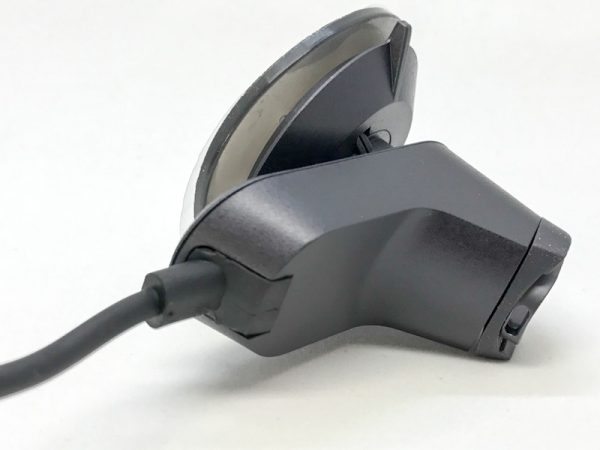 Here’s the longer USB cable attached to the suction cup mount. Notice how the microUSB plug is nicely covered.
Here’s the longer USB cable attached to the suction cup mount. Notice how the microUSB plug is nicely covered.
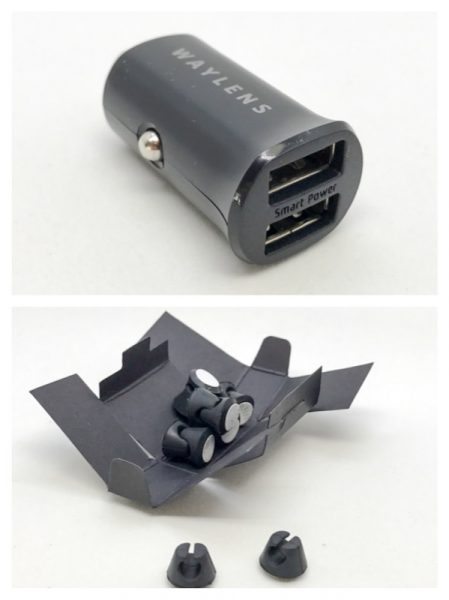 You also get a dual 12V to USB charger to power your camera, plus a handful of cone-shaped adhesive cable attachments to help keep things tidy.
You also get a dual 12V to USB charger to power your camera, plus a handful of cone-shaped adhesive cable attachments to help keep things tidy.
The camera receives speed, RPM and other data via this Bluetooth OBD dongle. It’s supposed to work with most cars made after 1996. You do not need the dongle to operate the camera.
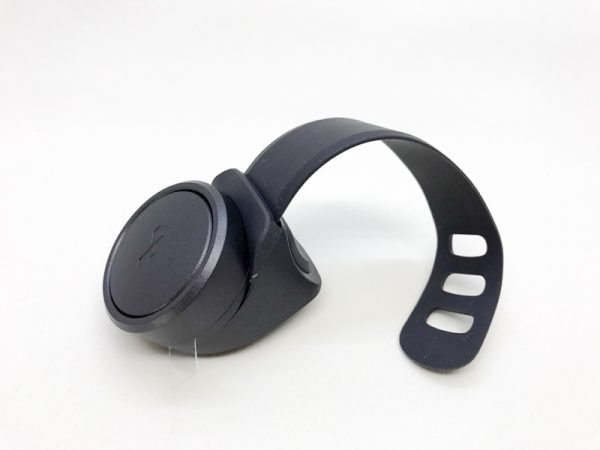 A Bluetooth one-button remote is designed to strap onto your steering wheel. If you don’t like mounting it there, the button itself detaches and you can mount it elsewhere. Use the button to tag highlights or other points of interest as the camera is recording.
A Bluetooth one-button remote is designed to strap onto your steering wheel. If you don’t like mounting it there, the button itself detaches and you can mount it elsewhere. Use the button to tag highlights or other points of interest as the camera is recording.
That round screen
Yes, the OLED display is round. This is a preview of what the camera sees.
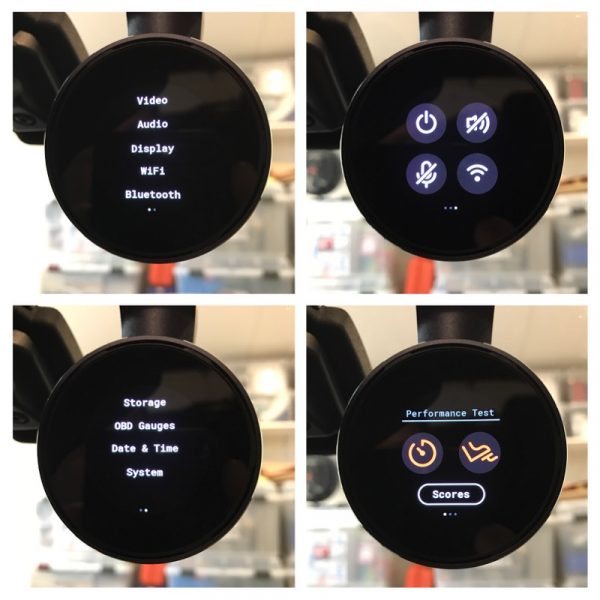 Despite the odd screen shape, the display is clear and easy to read. There’s even a “Performance Test” that uses speed vs. g-sensors to determine your 0-60 MPH times. I didn’t want to embarrass myself so I didn’t test this feature.
Despite the odd screen shape, the display is clear and easy to read. There’s even a “Performance Test” that uses speed vs. g-sensors to determine your 0-60 MPH times. I didn’t want to embarrass myself so I didn’t test this feature.
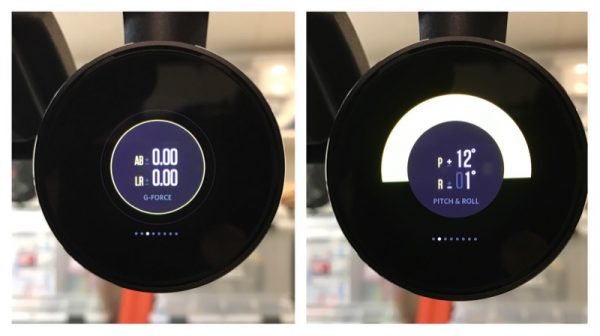 You can use the camera’s display as an extra gauge. Without the OBD transmitter, the camera can show G-forces and pitch/roll using onboard sensors.
You can use the camera’s display as an extra gauge. Without the OBD transmitter, the camera can show G-forces and pitch/roll using onboard sensors.
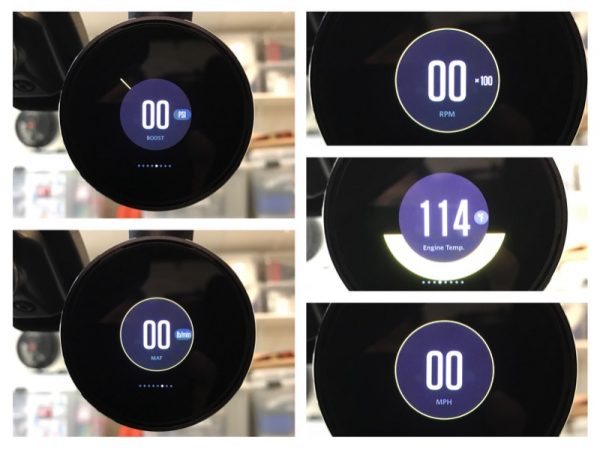 Once you have the OBD transmitter plugged in, you can display car-related parameters if your vehicle supports them. (Boost, MAF, RPM, Engine Temp and MPH).
Once you have the OBD transmitter plugged in, you can display car-related parameters if your vehicle supports them. (Boost, MAF, RPM, Engine Temp and MPH).
It seems that every other dash cam has a smartphone app. The Waylens Horizon is no different. The app connects via WiFi and it allows you to see what the camera sees, manage files, change settings, and even upload clips to a “social” tab on the app.
How does the video look?
The GoPro is a popular camera that records great looking video. However, GoPro cameras aren’t designed to be powered on by a car and automatically record, and there are issues with the looping file management that aren’t as convenient.
This side-by-side video from the Waylens website shows their camera next to a GoPro.
The next step for me was to give it a shot.
I did find that at 1080 HD resolution at 60 frames per second, video looked sharp and smooth. I love it! In the two screenshots above, you can see how the camera records video without the fancy overlays. It only “burns” the time and date.
What’s very interesting is that the camera doesn’t record the extra GPS, speed, RPM (etc) information onto the video. Instead, it’s saved on the memory card. You can add each “gauge” as an option after the fact using the app or desktop utility. There you can pick and choose, resize gauges, and select a style.
Here’s the desktop app (MacOS shown). In this screen, you can see how you can customize playback gauges.
Wobble, wobble, wobble
Things were looking up until I noticed some rather disturbing wobble from the camera while driving over rough spots.
It was a dark and stormy… day. The roads were horrible and as you can see, wobbly. I removed the camera and mount and decided to figure out what was going on.
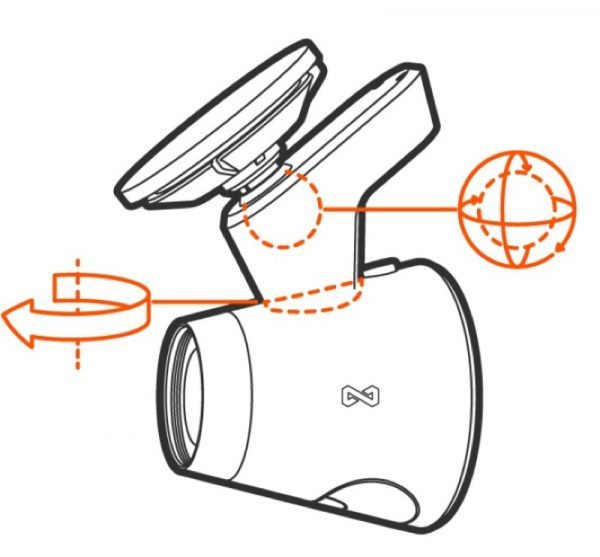 The camera is designed to orbit on the ball mount as well as pan left to right at the junction of the quick disconnect. Not only that, I noticed the suction cup flexed a little bit and the camera itself is heavier than your cheap plastic dash cam. All that metal and glass adds up on the scale, I guess.
The camera is designed to orbit on the ball mount as well as pan left to right at the junction of the quick disconnect. Not only that, I noticed the suction cup flexed a little bit and the camera itself is heavier than your cheap plastic dash cam. All that metal and glass adds up on the scale, I guess.
I contacted Waylens about this issue, and they sent me a second mount. The camera still produced shaky video.
It’s time to operate
Because I can’t leave well enough alone, I decided to remove the suction cup, and use 3M VHB adhesive to attach the suction cup-less mount to my windshield.
Here, I’ve removed the gummy, flexible suction cup disc. Once it’s off, there’s no going back.
After re-attaching the cup-less mount to my windshield, I went for a drive. Result? Still shaky. Augh!
Extreme Measures
I disassembled the mount and removed the ball mount. I believe that’s a GPS chip or receiver inside.
I then removed the flexible O-ring at the quick disconnect and laid down a bead of hot glue. The mount and the camera were now one solid unit. Note the strip of 3M VHB tape I’ve applied to the top of the mount.
Was the shaking gone?
Yes! I’m happy to say that with these destructive modifications, I’ve found my dashcam. (In the clip above, I’ve burned in the GPS map and speed, for fun.)
Other Notes
- The one-button remote control is useless to me. The remote has a non-rechargable button battery inside. To conserve power, it goes to sleep after a period of inactivity. This means it will not auto-pair every time you drive. You have to tap the button to wake it up. I found it didn’t do that all the time, either. This means if you try to “tag” something interesting during your drive, you may miss it.
- As you’d expect, you can set the circular screen to go dark after a set time (10 seconds, 30 seconds, etc.) The other option is a “moving dot” screen saver. It’s a dot that orbits the face like a clock. Why would you want that? I found out that when the camera is powered up and not recording, the dot is white. When it’s actively recording, the dot turns red. The dot isn’t annoying, and quite useful.
- Be sure to use the included USB power adapter plug in the car. For a while I was using another one, and after a few days, the battery level on the dash cam was down to 40% or so. I plugged the camera back in using the included charger and it’s not been a problem since. I suspect the charger that comes with the camera provides more current than your average, nameless car chargers.
- Want to get clever and use the little mini desktop mount in the car? You’re in for a rude surprise: The camera will not automatically turn on and start recording when you start the car, like a good dash cam should. Apparently, the camera is smart enough to tell the difference between the intended car mount vs. the little “home” mount. That’s too bad, because that would have been another DIY car mount option.
The Waylens Horizon dash cam is a feature-packed, well-built, enthusiast-oriented product with an Achilles’ heel for a mount. But at the current asking price, I’d hold off on buying one until Waylens changes the mount, unless you’re willing to try some DIY modifications.
I purchased the Waylens Horizon with my own funds. To read more, visit www.waylens.com for information.
Google Review Tap Cards (3-Pack) by TapFive - Tap for Instant Reviews - All Phones Compatible - Reusable Smart Tap NFC & QR - Boost Business Reviews - Powered by TapFive (3 Card Pack)
$34.90 (as of November 29, 2025 03:27 GMT -05:00 - More infoProduct prices and availability are accurate as of the date/time indicated and are subject to change. Any price and availability information displayed on [relevant Amazon Site(s), as applicable] at the time of purchase will apply to the purchase of this product.)REVLIXI Google Review Stand -Boost Reviews w/Reusable Google Review Tap Card Stand & QR Code Stand- No App or Subscription - Android & iPhone Compatible-Boost Google Reviews for Online Growth
$24.89 (as of November 28, 2025 17:53 GMT -05:00 - More infoProduct prices and availability are accurate as of the date/time indicated and are subject to change. Any price and availability information displayed on [relevant Amazon Site(s), as applicable] at the time of purchase will apply to the purchase of this product.)Product Information
| Price: | $499 ($449 promo price expires Jan 2, 2017) |
| Manufacturer: | Waylens |
| Requirements: |
|
| Pros: |
|
| Cons: |
|


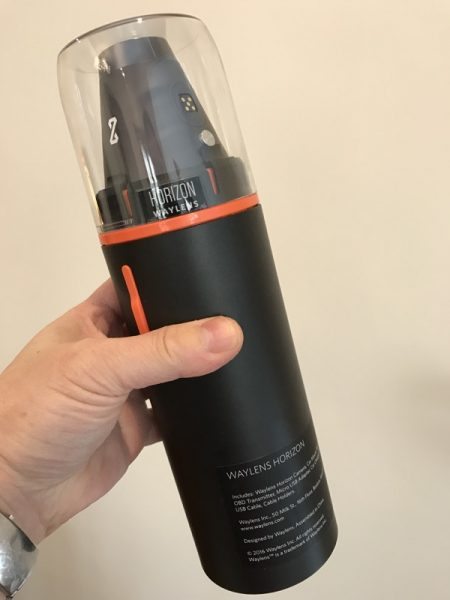
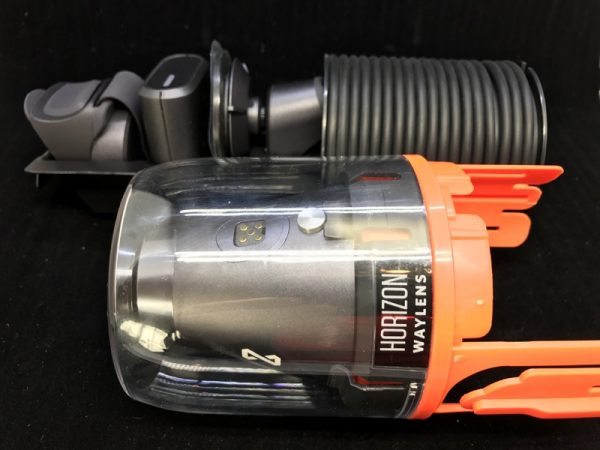
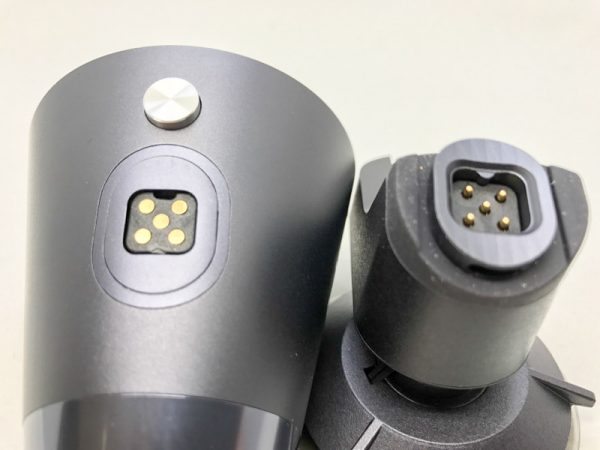
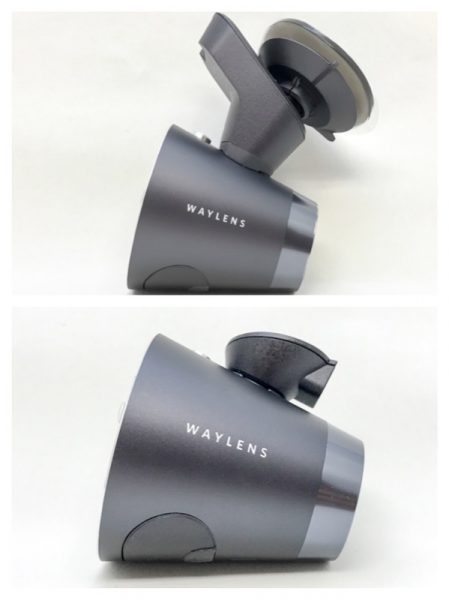
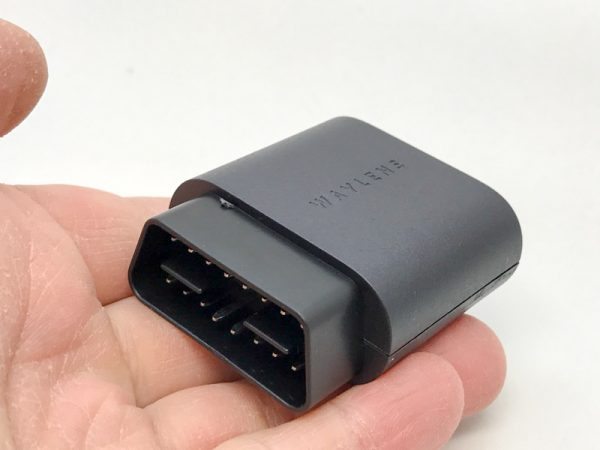
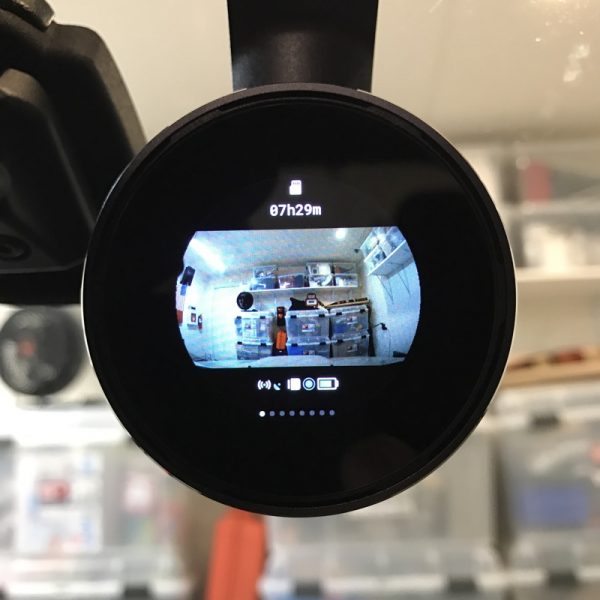
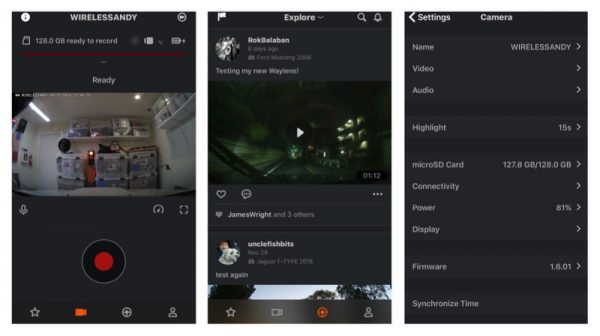
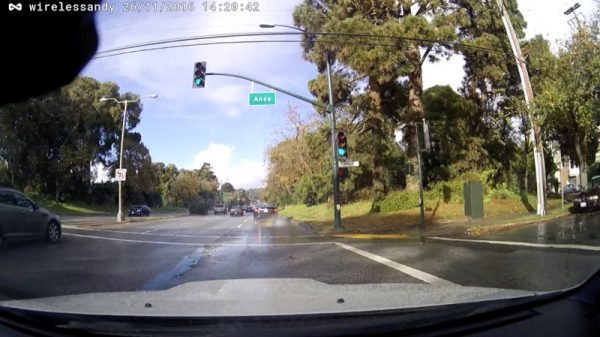
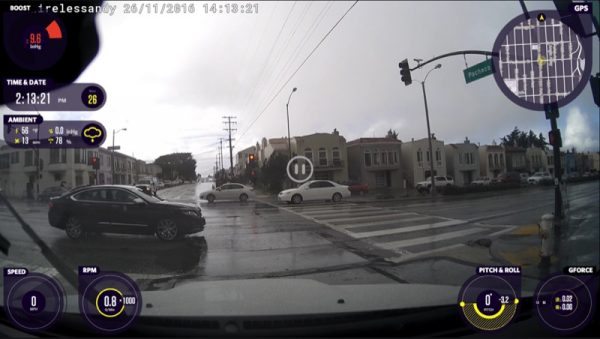

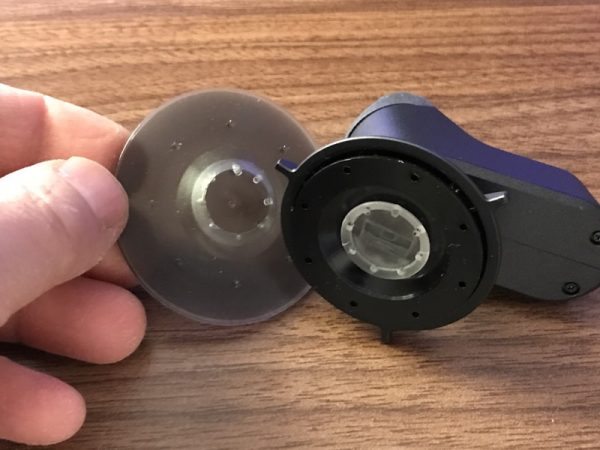
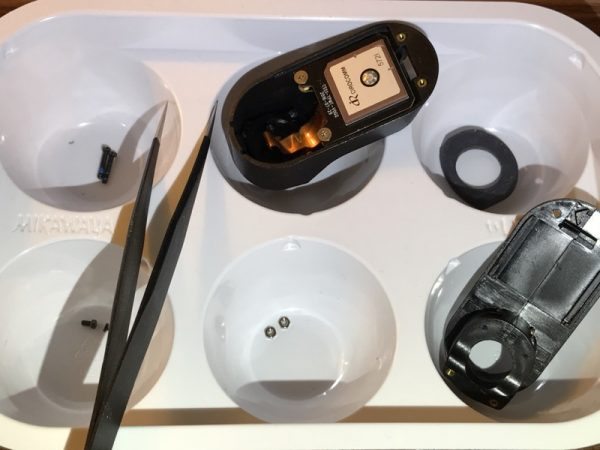
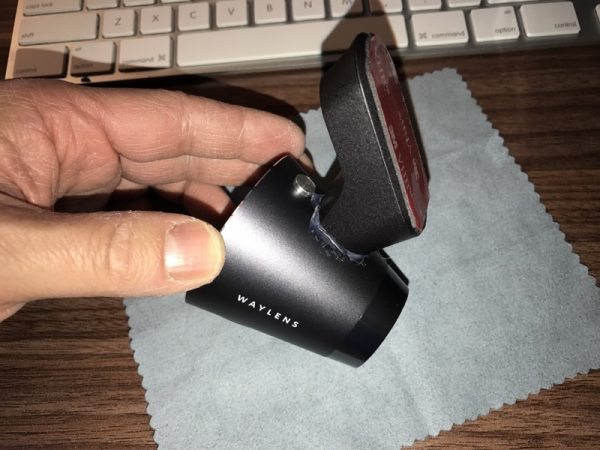
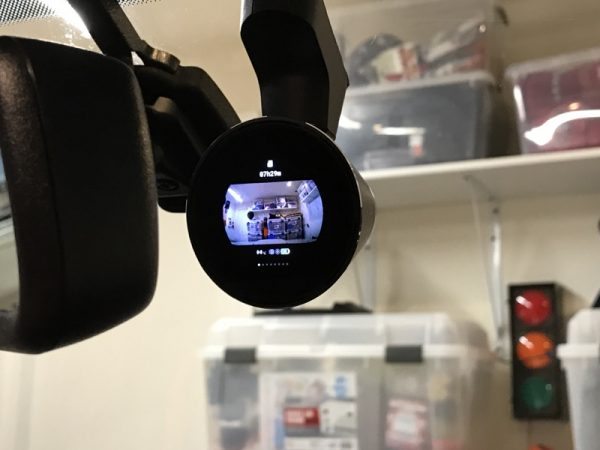


Gadgeteer Comment Policy - Please read before commenting
That was a very detailed review! Kudos for the in depth evaluation and tinkering for perfection!